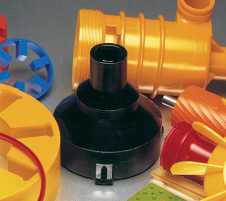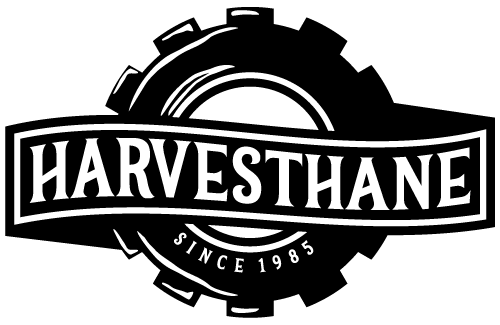Written By: Tony Lukas, Chemist Molded Dimensions Inc
Polyurethane suppliers and processors are continually looking to develop new materials and applications to take advantage of the unique properties of urethane. One advantage that urethane has over rubber is much higher abrasion resistance. This has historically been particularly true as the hardness reaches Shore 80A and above. Although materials of softer hardness have long been available, the physical properties and abrasion resistance has not been a good as rubber in the 50A-70A range. New developments are allowing for both polyether and polyester based materials that are great improvements over currently available urethanes and even better than natural rubber and SBR. Typical applications for these types of materials would be in systems with heavy flow of particulate containing liquids or slurries.
The part geometry and size can sometimes be a limiting factor in how a part is manufactured. It is important for the material to cure in a consistent reaction so that no weak spots or flow lines are incorporated into the part. The challenge has been that the cure reaction typically starts as all the ingredients are put together and it proceeds at some rate to completion. New materials with “blocked” curatives can be used to fill extremely large parts in molds that are below the reaction temperature. When filling is complete, the mold can be loaded into an oven to heat to a decoupling temperature that allows the cure reaction to start and proceed to completion. The blocked curative increases the processing time from a matter of minutes to nearly an indefinite period, allowing part weights of 50-200 pounds to be cast effectively.
One less common approach to molding urethane that Molded Dimensions utilizes is compression molding. This process allows for tight dimensional control, minimal flash, and reduced finishing requirements. Historically, compression molding has been limited to TDI based urethanes due to the relatively gradual cure curve that allows for mold filling, gel, and mold closing. There is some work underway to develop MDI based urethanes that would use the same curative as the TDI and allow for compression molding. The developments are still in the early phases, but could eventually yield a process that would create high rebound and high resilience parts that have long been limited to open cast processes.
The polyurethane industry also continues to try to understand the implications of one of our major curatives being included in the REACH standard as a Substance of Very High Concern. MOCA is the cure chemical primarily used when dealing with TDI based urethanes. It is a very forgiving and economical curative and leads to excellent properties. Molded Dimensions is one of the leaders in the industry in safe handling and processing of MOCA to insure that molded goods do not contain any excess MOCA and that our employees are safe on the job. In addition to the good manufacturing practices needed to process MOCA, there are a number of less regulated curatives that are being evaluated. By abbreviation, chemicals like MCDEA, MBOEA, and DACB are being tested in TDI urethanes. There are advantages and drawbacks for each, but use should continue to rise over the next few years as more comparative data becomes available both in processing and in physical properties.




